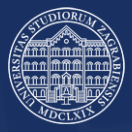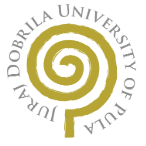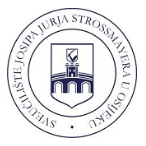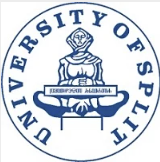Detailed introduction of the University of Zadar:
Introduction
The University of Zadar is a well-known public university in Croatia with a long history dating back to 1396. It is the oldest institution of higher education in Croatia and one of the oldest institutions of higher education in Europe.
Overview
Number of students and faculty: In 2022, there are about 6,000 students and 644 faculty, including 440 academic staff and 204 administrative staff.
Teaching departments: It has 27 university departments covering a wide range of subject areas.
History
Early origins: In 1396, a seminary called Universitas I Adertina was founded by the Dominicans. It was the product of the transfer of the University of Dyrrhachium to Zadar under the threat of Turkey and became the country's first institution of higher learning.
Development and changes: In 1807, due to historical events such as the Napoleonic Wars, the University of Zadar was no longer an independent institution, and its functions were taken over by other local universities. In 1956, the University of Zagreb re-established it as a satellite campus of the Faculty of Philosophy, which later became part of the University of Split. In 2002, the Croatian Parliament passed a bill allowing it to be re-established as a full-fledged independent university, and it officially opened to students in January 2003.
Foundation
The modern University of Zadar was established in 2002 Years.
School Strength
Rich disciplines and majors: The disciplines cover archaeology, classical linguistics, Croatian and Slavic studies, ecology, agronomy and aquaculture, economics, English, ethnology and anthropology, French and Iberian Romance studies, geography, German studies, health studies, history, art history, information science, Italian studies, linguistics, oceanography, education and other fields, providing students with a wide range of professional choices.
Strong scientific research strength: The school has four scientific research centers, including the Adriatic Sea Name Research Center, the Stjepan Maticevic Center, the Karst and Coastal Research Center and the Interdisciplinary Ocean and Maritime Research Center, which provide strong support for scientific research activities.
Extensive international cooperation: As a member of organizations such as the European University Association (EUA), it has established cooperative relations with many universities around the world, including South America and the United States, and actively carried out student exchange programs and cooperative research agreements, which has enhanced the school's international influence.
Institutional nature
Public university.
Educational philosophy
Research-oriented, developing education based on a long academic tradition, unique natural environment, and knowledge and cultural heritage. Emphasis is placed on cooperation with all persons involved in the educational and research process and all entities that require services and cooperation from the university, and is committed to achieving academic excellence, clear learning outcomes and lifelong learning, promoting sustainable development, strengthening mobility and cooperation with European institutions, cultivating students' innovative abilities, and promoting tolerance and the development of civil society.
Key laboratories and disciplines
Key disciplines: Archaeology, oceanography and other disciplines have an important position in the school's discipline system. The Dalmatia region where Zadar is located has a rich historical and cultural heritage and a unique marine environment, which provides unique conditions for the study of archaeology and oceanography. The school has carried out in-depth teaching and scientific research in these fields and has achieved certain results.
Key laboratories: The four research centers of the university, namely the Center for the Study of the Names of the Adriatic Sea, the Center for the Study of Karst and Coastal Studies, and the Center for Interdisciplinary Marine and Maritime Studies, can be regarded as key laboratories, focusing on cutting-edge research in their respective fields and providing an important platform for the development of related disciplines.
Faculty
The university has 27 university departments, including the Department of Archaeology, the Department of Classical Philology, the Department of Croatian Studies, the Department of Ecology, the Department of Agronomy and Aquaculture, the Department of Economics, the Department of Ethnology and Anthropology, the Department of French and Francophone Studies, the Department of German Studies, the Department of Health, the Department of History, the Department of Art History, the Department of Italian Studies, the Department of Linguistics, the Department of Education, the Department of Philosophy, the Department of Psychology, the Department of Sociology, the Department of Teacher and Preschool Teacher Education, the Department of Gospić Teacher Studies, the Department of Transport and Maritime Studies, the Department of Tourism and Communication Sciences, etc.
Ranking
European University Rankings 2025 - Southern Europe: 137th.
QS Emerging Europe and Central Asia Rankings 2022: 301-350th Location.
Expenses
The specific tuition fees vary according to the major and degree level. The school provides students with a variety of scholarship opportunities to help them reduce their financial burden. Specific scholarship information can be found in the school's scholarship guide.
Campus environment
Excellent geographical location: Located in Zadar, one of the oldest and continuously inhabited cities in Croatia, students can enjoy the charming scenery of the Dalmatia region and the blue Adriatic Sea. The city's historical and cultural heritage also adds a strong humanistic atmosphere to students' study and life.
The campus facilities are complete: the school has its own library, providing students with rich learning resources. In addition, there are gymnastics and student sports centers, foreign language centers, etc. to meet the diverse needs of students.
-

University of Dubrovnik
-

University of Zagreb
-

VERN' University
-

University of Rijeka
-

University of Pula
-

University of Zadar
-

J.J. Strossmayer University of Osijek
-

Karlovac University of Applied Sciences
-

Zagreb University of Applied Sciences
-

University of Split
-

Mesoamerican University
-

Istmo University
-

Mariano Galvez University of Guatemala
-

Regional University of Guatemala
-

Galileo University
-

Francisco Marroquín University
-

Rafael Landívar University
-

University of the Valley of Guatemala
-

University of San Carlos of Guatemala
-

Technological Institute of Tlaxcala Plateau
-

Golfo University
-

Technological University of South Sonora
-

Technological University of Huejotzingo
-

Tizimín Institute of Technology
-

Chilpancingo Institute of Technology
